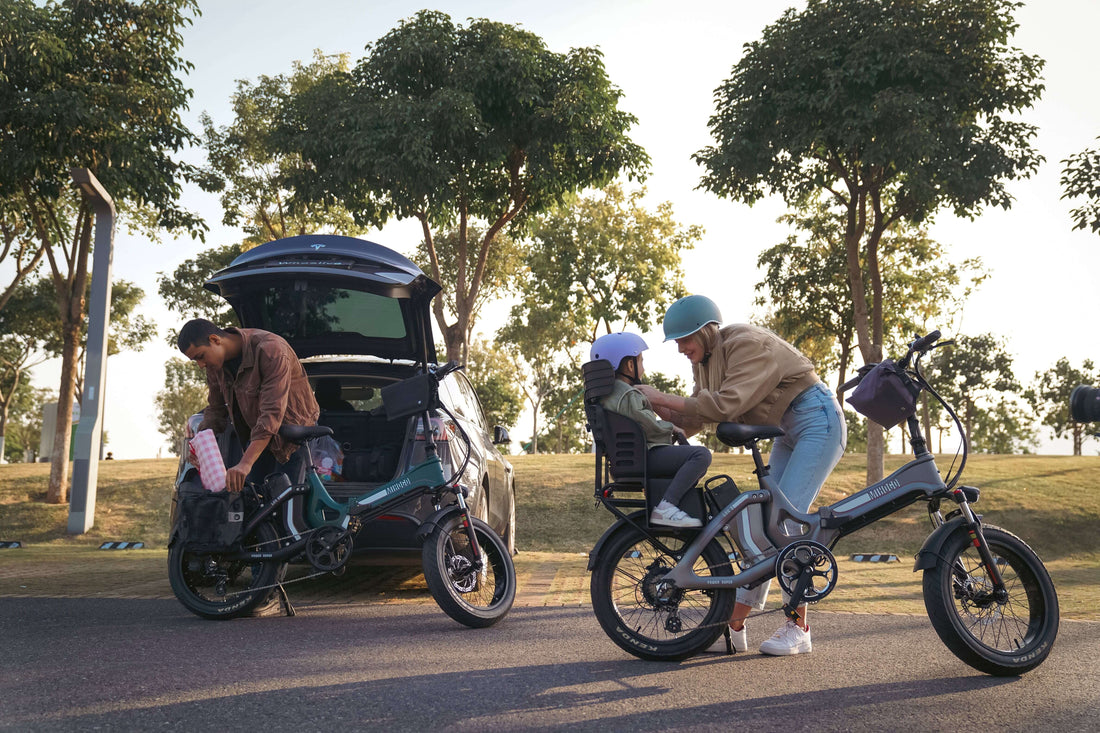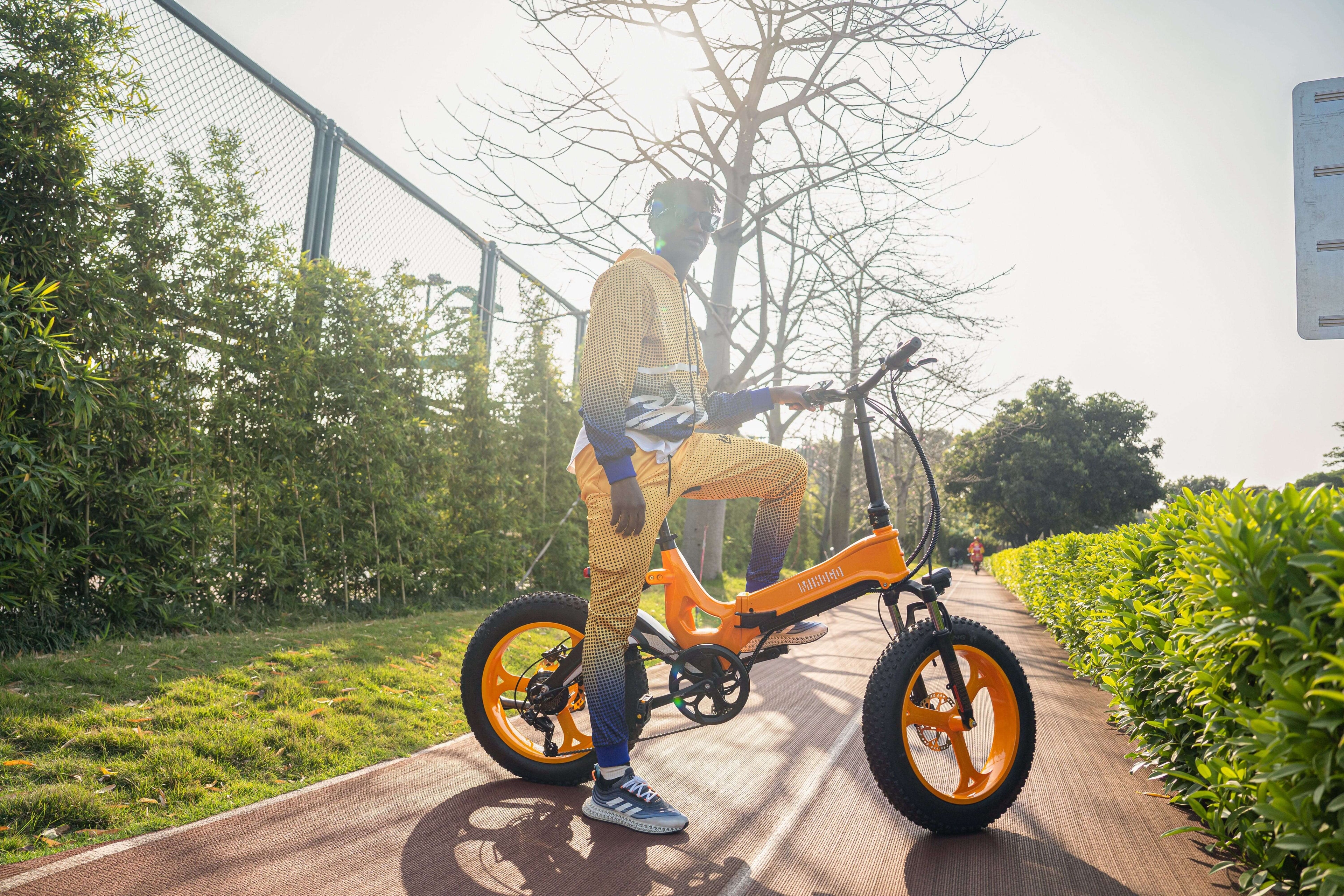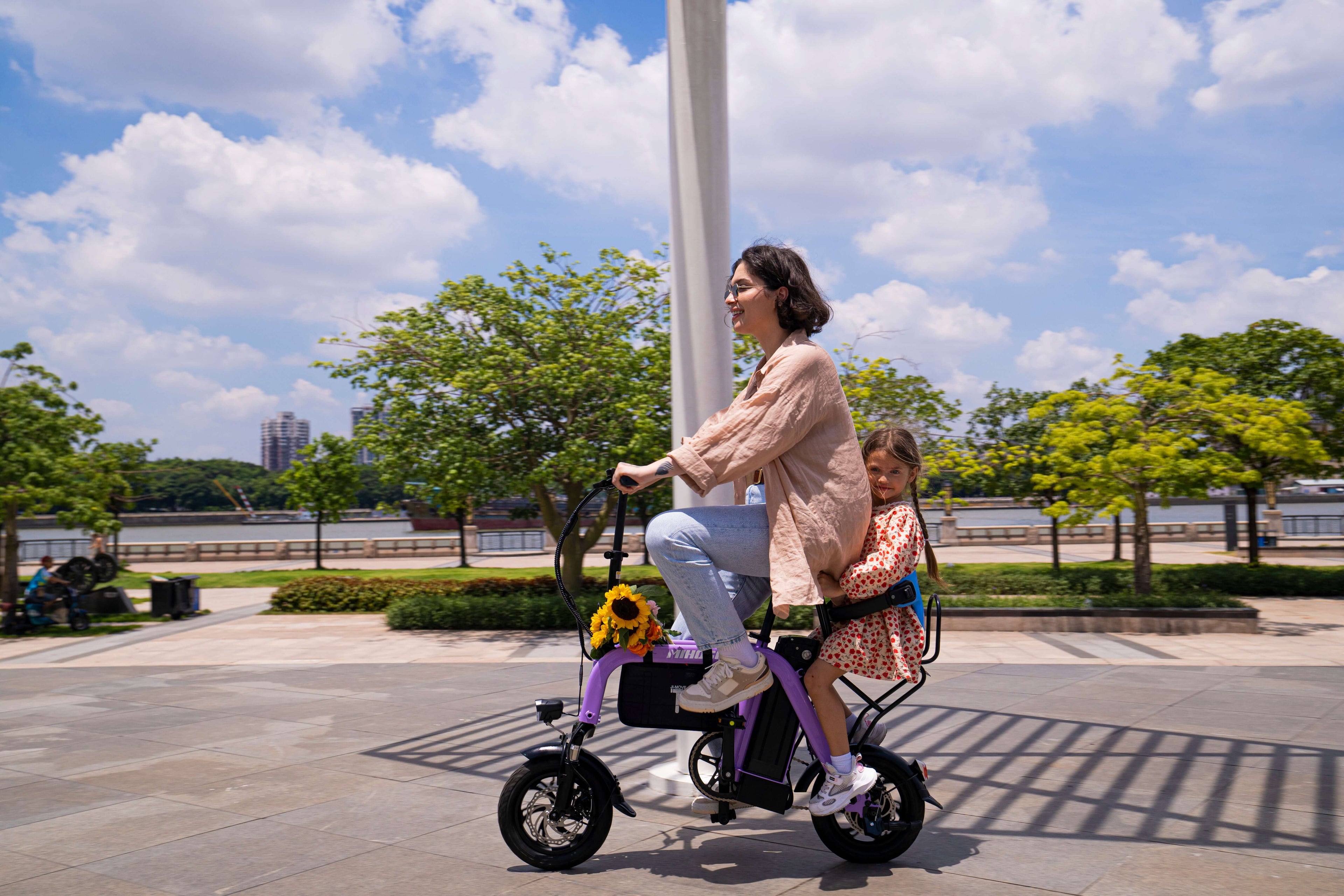Understanding All-Weather E-Biking Fundamentals
E-Bike Weather Resilience
Electric bikes are designed to handle various weather conditions, but each season presents unique challenges and opportunities. E-bikes are water-resistant and can also be ridden in the rain, though the critical distinction is that e-bikes are water-resistant but not waterproof. Modern e-bike drives offer excellent protection, with electronics safely installed and well protected against rain, splashes, and similar conditions.
Temperature Impact on E-Bike Performance
E-bike batteries work even in extreme temperatures – in both cold and heat – but everything outside the feel-good zone is suboptimal. A classic temperature range in which optimal performance occurs is between 10°C and 27°C (50°F to 80°F). Understanding these parameters helps you prepare for seasonal variations.
Mihogo Model Weather Adaptability
All-Season Model Recommendations
Mihogo Air750 Max - Premium All-Weather Performance
- Specifications: Carbon fiber frame, 750W motor, 121-mile range
- Weather Advantages: Carbon fiber provides superior temperature stability and corrosion resistance
- Best Seasons: Excellent for spring and fall riding, summer touring, and dry winter conditions
- Terrain Adaptability: Ideal for maintained roads, bike paths, and mixed weather commuting
Mihogo ONE Utility EBIKE - Heavy-Duty Weather Warrior
- Specifications: 750W motor, 167-mile range, utility design
- Weather Advantages: Robust construction handles harsh conditions, extended range accommodates weather-related detours
- Best Seasons: Perfect for winter commuting, spring utility tasks, and year-round cargo hauling
- Terrain Adaptability: Excellent for urban environments, light snow, and all-weather commuting
MIHOGO RX 2.4 - Versatile Season Adapter
- Specifications: 500W motor, 40-mile range, folding design
- Weather Advantages: Compact folding allows easy indoor storage during extreme weather
- Best Seasons: Ideal for spring and fall commuting, summer recreational rides, and moderate winter use
- Terrain Adaptability: Urban streets, bike paths, and light trail conditions
Mihogo Mini - Compact Weather Companion
- Specifications: 350W motor, 62-mile range, lightweight design
- Weather Advantages: Lightweight design reduces energy consumption in challenging conditions
- Best Seasons: Perfect for spring and summer short trips, moderate autumn riding
- Terrain Adaptability: City streets, bike paths, and fair-weather recreational use
Spring E-Biking Excellence
Spring Awakening: Preparing Your Mihogo
Spring maintenance is essential to ensure your e-bike stays in top shape after winter storage. Regular maintenance can extend the life of your e-bike by up to 30%, according to industry standards. Start by giving your e-bike a good clean - over the winter, dirt and salt can accumulate on the frame and parts.
Spring Preparation Checklist:
- Battery capacity check and full charge cycle
- Tire pressure inspection and adjustment
- Brake system evaluation and adjustment
- Chain lubrication and drivetrain cleaning
- Electrical system inspection for winter damage
Spring Weather Riding Strategies
Variable Spring Conditions:
- Prepare for temperature fluctuations throughout the day
- Layer clothing for easy adjustment
- Monitor weather forecasts for sudden changes
- Keep rain gear accessible during transitional weather
Spring Terrain Challenges:
- Watch for debris washed onto bike paths
- Be cautious around melting snow and ice patches
- Adjust to changing daylight hours
- Prepare for increased pedestrian and vehicle traffic
Summer Heat Management
Hot Weather Riding Optimization
Summer brings peak e-biking season but also unique challenges. Make sure to keep your ebike, especially the battery, out of direct sunlight during the hottest summer days. The temperature inside a car on a very hot day can exceed 170 degrees Fahrenheit (76.6 degrees Celsius), making proper storage crucial.
Summer Riding Schedule:
- Early morning rides (6-9 AM) for cooler temperatures
- Evening rides (6-8 PM) after peak heat
- Avoid riding during peak heat hours (noon-4 PM)
- Plan routes with shade and rest stops
Battery Heat Protection
Summer Battery Care:
- Store batteries indoors when not in use
- Allow hot batteries to cool before charging
- Use lower assist levels to reduce heat generation
- Monitor battery temperature during long rides
Heat-Related Performance Adjustments:
- Expect slightly reduced range in extreme heat
- Use eco-mode during hot weather
- Take more frequent breaks in shaded areas
- Carry extra water for both rider and bike cooling
Autumn Riding Mastery
Fall Weather Adaptation
Autumn presents ideal e-biking conditions with moderate temperatures and stunning scenery. However, seasonal changes require specific preparations and awareness.
Autumn Riding Considerations:
- Prepare for earlier darkness and reduced visibility
- Watch for wet leaves creating slippery conditions
- Adjust to changing weather patterns
- Enjoy peak riding comfort temperatures
Seasonal Transition Maintenance
Fall Preparation Tasks:
- Clean and protect components from increasing moisture
- Check lighting systems for shorter days
- Inspect tires for adequate tread before winter
- Prepare battery for temperature fluctuations
Winter Weather Mastery
Cold Weather E-Biking
Even though e-bikes can usually function in extremely cold temperatures around -5°F, the lithium-ion batteries they rely on are vulnerable in freezing winter conditions. From -10°C the battery only delivers a fraction of the maximum power, and from -15°C, the battery can no longer supply any power for assistance.
Winter Riding Preparation:
- Bring battery inside when temperatures drop below 40°F
- Use lower assist levels to conserve battery power
- Dress in layers for temperature regulation
- Plan shorter routes to account for reduced range
Winter Terrain Navigation
Snow and Ice Riding:
- Reduce speed and increase following distance
- Test brakes before each ride
- Use lower tire pressure for better traction
- Consider studded tires for icy conditions
Winter Safety Protocols:
- Increase visibility with additional lighting
- Wear reflective clothing and gear
- Avoid riding during severe weather conditions
- Inform others of your planned route
Rain and Wet Weather Riding
Rainy Day E-Biking
It's going to be more challenging to ride your electric bicycle in the rain than it would be in sunny weather. Low visibility and slippery roads are just a few of the additional challenges that come with rainy weather. However, with proper preparation, you can ride safely in wet conditions.
Wet Weather Essentials:
- Install fenders to protect components and rider
- Use bright lights for visibility
- Wear waterproof clothing
- Plan routes on well-maintained surfaces
Post-Rain Maintenance
After-Rain Care:
- Wipe down bike thoroughly to remove water and debris
- Clean and lubricate chain to prevent rust
- Check brake performance after wet conditions
- Store in dry, ventilated area
Corrosion Prevention:
- Remove salt and road chemicals immediately
- Use wet-weather lubricants
- Inspect components for moisture damage
- Apply protective coatings as needed
Extreme Weather Protocols
Severe Weather Safety
When Not to Ride:
- Temperatures below -15°C (-5°F)
- Heavy storms with lightning
- Extreme heat above 40°C (104°F)
- Severe wind conditions
Emergency Preparedness:
- Carry emergency contact information
- Keep portable phone charger
- Plan alternative transportation routes
- Monitor weather alerts and warnings
Equipment Upgrades for Extreme Conditions
Cold Weather Upgrades:
- Battery insulation covers
- Heated grips or handlebar mitts
- Studded tires for ice
- Windproof storage solutions
Hot Weather Modifications:
- Ventilated battery mounts
- Reflective frame tape
- Cooling accessories
- Heat-resistant components
Seasonal Battery Management
Year-Round Battery Care
Temperature-Specific Storage:
- Spring: 50-70°F optimal range
- Summer: Avoid direct sunlight, store indoors
- Fall: Gradually adjust to cooler temperatures
- Winter: Bring inside when below 40°F
Seasonal Charging Strategies:
- Spring: Full charge cycles to restore capacity
- Summer: Charge in air-conditioned environments
- Fall: Monitor capacity changes with temperature
- Winter: Warm to room temperature before charging
Long-Term Battery Health
Seasonal Storage Tips:
- Maintain 40-60% charge for extended storage
- Check battery monthly during off-seasons
- Avoid deep discharge in any season
- Use manufacturer-approved chargers only
Route Planning for All Seasons
Weather-Conscious Navigation
Seasonal Route Considerations:
- Spring: Avoid flood-prone areas, watch for debris
- Summer: Prioritize shaded paths, plan cooling stops
- Fall: Account for leaf coverage, shorter daylight
- Winter: Stick to plowed/maintained routes
Weather-Adaptive Planning:
- Check forecasts before departure
- Have backup indoor routes
- Plan for seasonal traffic changes
- Consider weather-related delays
Emergency Route Strategies
Weather Emergency Protocols:
- Identify shelter locations along routes
- Plan multiple route options
- Carry emergency contact information
- Know local weather warning systems
Maintenance Across Seasons
Seasonal Maintenance Calendar
Spring (March-May):
- Deep clean and inspection
- Battery capacity testing
- Tire and brake system check
- Electrical component evaluation
Summer (June-August):
- Heat protection measures
- Increased cleaning frequency
- Battery cooling protocols
- UV protection application
Fall (September-November):
- Winter preparation checklist
- Component weatherproofing
- Battery storage preparation
- Lighting system update
Winter (December-February):
- Cold weather adaptations
- Reduced maintenance intervals
- Indoor storage protocols
- Battery care intensification
Professional Service Intervals
Seasonal Service Recommendations:
- Spring: Comprehensive tune-up
- Summer: Mid-season inspection
- Fall: Winter preparation service
- Winter: Minimal intervention unless needed
Environmental Impact and Sustainability
Year-Round Environmental Benefits
All-season e-biking with your Mihogo contributes to reduced carbon emissions throughout the year. One e-bike can reduce approximately 225 kilograms of CO₂ emissions annually, with year-round use amplifying these environmental benefits.
Sustainable Seasonal Practices
Eco-Friendly Maintenance:
- Use biodegradable cleaning products
- Recycle worn components properly
- Choose sustainable gear options
- Minimize single-use accessories
Advanced All-Weather Techniques
Weather Reading Skills
Microclimate Awareness:
- Understand local weather patterns
- Recognize hazardous condition signs
- Adapt to urban heat island effects
- Monitor seasonal weather transitions
Predictive Riding Strategies
Weather Anticipation:
- Adjust riding style before conditions worsen
- Prepare equipment for forecasted changes
- Plan alternative routes for predicted weather
- Maintain flexibility in riding schedules
Conclusion: Master All-Season E-Biking
All-season e-biking with your Mihogo electric bike transforms weather from an obstacle into an opportunity for year-round adventure. By understanding seasonal challenges, preparing your equipment appropriately, and adapting your riding techniques, you can enjoy safe, comfortable, and exhilarating rides throughout every season.
Whether you're commuting through spring showers on your versatile RX 2.4, tackling winter conditions with the robust Mihogo ONE, enjoying summer tours on the premium Air750 Max, or navigating autumn adventures with the compact Mini, each season offers unique rewards for the prepared e-bike rider.
Remember that successful all-weather e-biking combines proper preparation, appropriate gear, and respect for changing conditions. With this comprehensive guide, you're equipped to make every season your favorite riding season.
Embrace the full spectrum of weather conditions and discover how your Mihogo e-bike can enrich your life throughout the entire year. The road awaits – in every season, through every weather condition, your electric adventure continues.
External References:
- Weather Safety Guidelines - National Weather Service Safety Information
- Seasonal Cycling Research - Academic Research on Seasonal Cycling
- Climate Impact of E-Bikes - Wikipedia Transport Environmental Impact Overview








